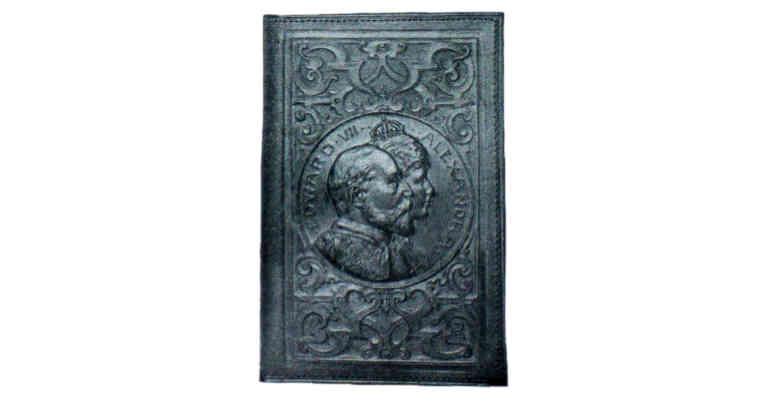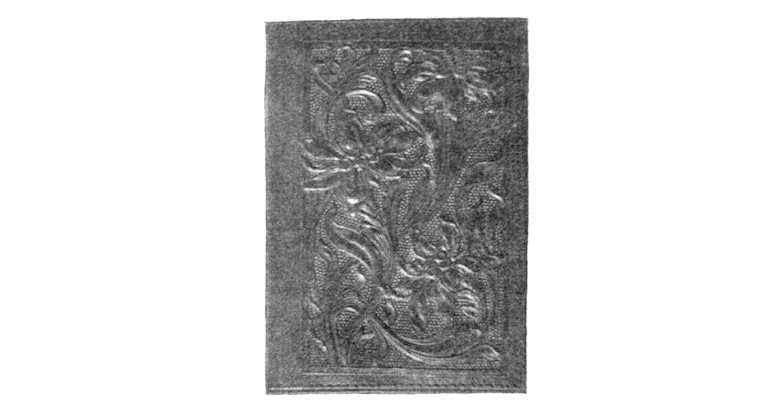Victorian Era arts and crafts leatherwork at home


Introduction
The Victorian era, a time of elegance, innovation, and intricate craftsmanship, witnessed a flourishing interest in the art of leathercraft within the domestic sphere. As we delve into the annals of this captivating period, we uncover a world where creativity knew no bounds, and the simple act of crafting leather at home held profound significance. The Victorian home, with its penchant for opulence and personal expression, became the canvas for countless leatherwork projects. From ornate book covers to intricately embellished accessories, leather crafting was a cherished pastime that allowed individuals to infuse their living spaces with their unique style. Leatherwork crafts were often paired with Victoriana Metal Craftsmanship. In this exploration, we embark on a journey through the Victorian era, unraveling the intricate threads of this rich tradition of home-based leather craftsmanship that remains an enduring testament to human creativity.

The Significance of Leather Crafting in the Victorian Era
During the Victorian era, leather crafting emerged as an integral aspect of domestic life, reflecting the prevailing values of the time. The significance of this craft extended beyond its utilitarian aspects; it was a means of self-expression and status. As society underwent profound changes, the Victorian home became a microcosm of innovation and individualism. Leatherwork provided an avenue for homemakers to manifest their artistic prowess, with many considering it a desirable skill to possess. Moreover, the items crafted, whether a hand-stitched journal cover or a finely tooled belt, often served as treasured heirlooms, passed down through generations, carrying with them the memories and aesthetics of the era. In the splendid tapestry of Victorian household craftsmanship, the affinity for brass, copper, and iron wasn't just coincidental; it was a deliberate choice driven by several factors. First and foremost, these metals embodied a harmonious blend of utility and beauty, perfectly aligning with the era's emphasis on functional aesthetics.
Amidst the bustling industrialization of the Victorian period, the act of creating leatherwork at home also had therapeutic qualities. The meticulous process of cutting, embossing, and stitching leather provided a respite from the demands of daily life. It allowed individuals, particularly women, to engage in a productive and creative endeavor that contributed to their sense of purpose and accomplishment. In an era where societal norms were rigid, leather crafting became an avenue for personal expression and autonomy, transcending the boundaries of class and gender.

Typical Victorian Home Leather Projects
In the Victorian home, leathercraft knew no bounds, with a myriad of projects adorning parlors, libraries, and personal spaces. Bookbinding, a craft that combined the love for literature with intricate leatherwork, was particularly popular. Victorians cherished the art of handcrafting leather-bound books, often embellished with intricate designs and gilt edges. These volumes not only protected cherished literary treasures but also served as decorative pieces, adding a touch of sophistication to the home.
Beyond bookbinding, leatherwork extended to a diverse range of items. Elaborate wallets, purses, and cardholders, often featuring intricate embossing and hand-painted details, showcased the craftsmanship of their creators. Belts and suspenders, too, were fashioned with a keen eye for design, blending functionality with aesthetics. Additionally, the era saw a surge in the crafting of decorative boxes, picture frames, and wall hangings, all adorned with the artistry of leatherwork. These items bore testament to the Victorian penchant for embellishment, as every detail, from floral motifs to geometric patterns, was meticulously executed.
As Victorians embraced the concept of the home as a sanctuary, leather crafting found its place in the creation of ornamental pieces. Screens, room dividers, and decorative panels often featured leather inserts with intricate designs. These additions not only served as artistic expressions but also allowed for the manipulation of light and space within the home. Victorian interior spaces became a canvas for experimentation, blending various materials, including wood, fabric, and leather, to achieve a harmonious and aesthetically pleasing ambiance.

How to Identify Home Arts & Crafts Leatherwork
Identifying home arts and crafts leatherwork from the Victorian era requires a keen eye for detail and an understanding of the distinctive characteristics of this period's craftsmanship. Here, we explore some key elements to help you distinguish genuine Victorian home leatherwork from modern reproductions or imitations.
- Materials and Techniques: One of the first indicators of authentic Victorian leatherwork is the choice of materials and techniques employed. In the 19th century, craftsmen primarily used vegetable-tanned leather, which tends to darken and develop a rich patina with age. Look for signs of hand-tooling and embossing, as Victorian leatherwork often features intricate patterns and motifs created through these labor-intensive processes. Genuine Victorian pieces may exhibit some wear and tear, but this only adds to their authenticity.
- Design Aesthetics: Victorian leatherwork is characterized by its elaborate and ornate design aesthetics. Examine the patterns closely; you'll often find intricate floral motifs, geometric designs, and sometimes even narrative scenes. The designs should be symmetrical and finely detailed. Additionally, Victorian leatherwork often incorporates other materials such as brass or copper hardware, further enhancing its visual appeal. Keep an eye out for embellishments like rivets, studs, or decorative stitching that complements the overall design.
- Provenance and Documentation: Authenticating Victorian home leatherwork can be greatly aided by provenance and historical documentation. If you're lucky enough to have access to records or family stories that trace the origin of the piece back to the Victorian era, that's a valuable clue. Original receipts, photographs, or correspondence related to the item can also serve as compelling evidence of its age. Additionally, consulting experts or collectors with knowledge of Victorian craftsmanship can provide valuable insights into the authenticity of a piece. Don't hesitate to seek professional opinions when in doubt.
By examining the materials, design aesthetics, and historical context of a piece of leatherwork, you can gain a deeper appreciation for its authenticity and the craftsmanship of the Victorian era. These insights will not only help you identify genuine Victorian home leatherwork but also allow you to preserve and cherish these intricate pieces of history for generations to come.
Fun Fact… Did you know that Queen Victoria herself was an avid supporter of the arts and crafts movement, which included leatherwork? Queen Victoria's love for craftsmanship and her influential role in Victorian society greatly contributed to the popularity of home arts and crafts during her reign. Her support for traditional craftsmanship, including leatherwork, inspired many households to take up these creative pursuits, resulting in a rich legacy of beautifully crafted items from the Victorian era. Today, these cherished pieces continue to be sought after by collectors and enthusiasts, bearing witness to the enduring appeal of Victorian arts and crafts.
Conclusion
Within the intricate stitching of Victorian household leathercraft, the preference for brass, copper, and iron was not a mere coincidence; it was a purposeful selection influenced by various factors. These metals seamlessly intertwined utility and elegance, harmonizing with the era's insistence on functional beauty. Leatherwork in this period carried significance beyond its practical use; it emerged as a medium for individual expression and a marker of social standing. In a time when societal conventions were unyielding, leather crafting provided a pathway to personal creativity and autonomy, bridging divisions of class and gender.
As we explore Victorian home leatherwork, we uncover a world where creativity knew no bounds, and the simple act of crafting leather at home held profound significance. It was a therapeutic escape, a means of creating functional art, and a reflection of individualism within the constraints of the time. From bookbinding to decorative screens, leatherwork found its place in the hearts and homes of Victorians, leaving behind a legacy of intricately crafted pieces that continue to captivate collectors and enthusiasts today.
By understanding the materials, design aesthetics, and historical context of Victorian leatherwork, we can identify and preserve these intricate pieces of history. Queen Victoria's patronage of the arts and crafts movement, including leatherwork, further underscores the enduring appeal of these creations. As we cherish these items from a bygone era, we honor the legacy of craftsmanship and creativity that defined the Victorian era, reminding us that artistry knows no bounds, even within the confines of a humble home workshop.



